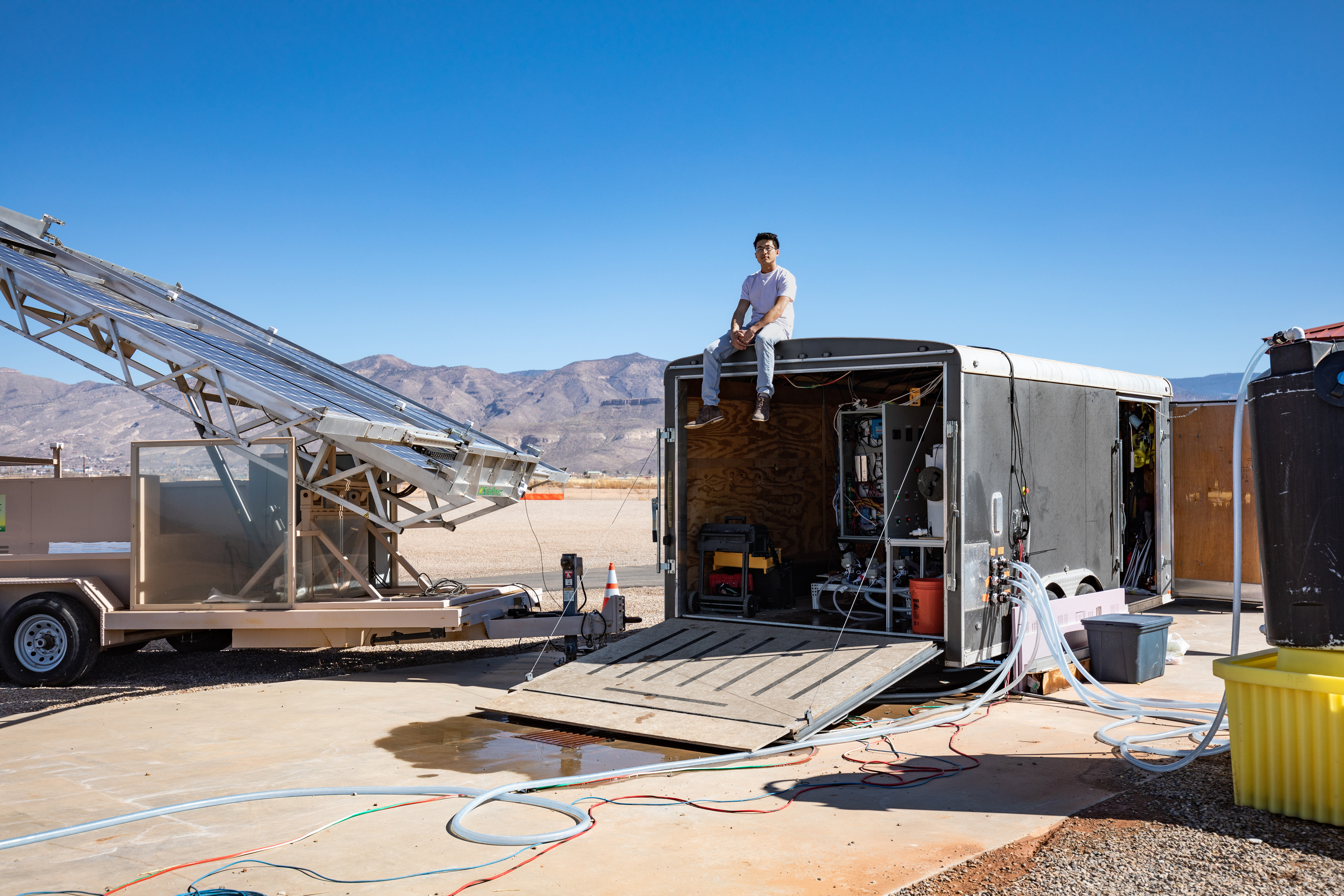Solar-Powered Desalination System Maximizes Clean Water Production

Introduction
MIT engineers have developed a new desalination system that operates in sync with solar energy, aligning with the Sustainable Development Goals (SDGs) of clean water and affordable and clean energy.
System Description
The solar-powered system efficiently removes salt from water by adjusting its desalting process according to changes in solar energy. As sunlight increases throughout the day, the system ramps up its desalination process, and it automatically adapts to sudden variations in sunlight, such as dialing down during cloudy periods or increasing output when the skies clear.
This system stands out from other solar-driven desalination designs as it does not require extra batteries for energy storage or a supplemental power supply from the grid. By quickly reacting to subtle changes in sunlight, it maximizes the utility of solar energy and produces large quantities of clean water despite variations in sunlight.
Testing and Results
MIT engineers tested a community-scale prototype of the system on groundwater wells in New Mexico over a six-month period, operating under variable weather conditions and water types. The system harnessed an average of over 94 percent of the electrical energy generated from the solar panels, producing up to 5,000 liters of water per day, even with large swings in weather and available sunlight.
Implications and Potential
The system is specifically designed for desalinating brackish groundwater, which is a more prevalent but salty source of water found in underground reservoirs. The researchers believe that brackish groundwater holds significant potential as a source of drinking water, especially in areas where fresh groundwater resources are scarce. The renewable, battery-free system has the potential to provide sustainable and affordable clean water, particularly for inland communities with limited access to seawater and grid power.
Research Details
The researchers published a paper detailing the new system in Nature Water. The study’s co-authors include Jonathan Bessette, Amos Winter, and Shane Pratt.
Previous Design and Improvements
The new system builds upon a previous design called “flexible batch electrodialysis.” The previous system used electrodialysis, which employs an electric field to draw out salt ions as water passes through ion-exchange membranes. The researchers developed a model-based control system that optimized the rate of water pumping and the voltage applied to the stack to maximize salt removal.
However, the previous system required additional batteries to compensate for fluctuations in solar power. To address this limitation, the researchers devised a simpler control strategy called “flow-commanded current control.” This strategy enables the system to adjust its desalination rate three to five times per second, closely matching consumed power with available solar power throughout the day.
Future Plans
The engineers plan to further test and scale up the system to provide low-cost, fully sun-driven drinking water to larger communities and municipalities. They aim to continue developing lower-cost and more sustainable desalination methods aligned with the SDGs.
Conclusion
The solar-powered desalination system developed by MIT engineers offers a promising solution for producing clean water using renewable energy. By maximizing the utility of solar energy and eliminating the need for additional batteries, the system has the potential to provide sustainable and affordable clean water to underreached areas around the world.
This research was supported by the National Science Foundation, the Julia Burke Foundation, and the MIT Morningside Academy of Design. It was additionally supported in-kind by Veolia Water Technologies and Solutions and Xylem Goulds.
SDGs, Targets, and Indicators
1. Which SDGs are addressed or connected to the issues highlighted in the article?
- SDG 6: Clean Water and Sanitation
- SDG 7: Affordable and Clean Energy
- SDG 9: Industry, Innovation, and Infrastructure
- SDG 13: Climate Action
The article discusses a solar-powered desalination system that aims to provide clean water in a sustainable and affordable manner. This addresses SDG 6, which focuses on ensuring availability and sustainable management of water and sanitation for all. The system also relies on solar energy, contributing to SDG 7, which aims to ensure access to affordable, reliable, sustainable, and modern energy for all. Additionally, the development of this innovative system aligns with SDG 9, which promotes the development of resilient infrastructure and the fostering of innovation. Finally, by utilizing renewable energy and reducing the need for traditional desalination methods, the system contributes to SDG 13, which aims to combat climate change and its impacts.
2. What specific targets under those SDGs can be identified based on the article’s content?
- SDG 6.1: By 2030, achieve universal and equitable access to safe and affordable drinking water for all.
- SDG 7.2: By 2030, increase substantially the share of renewable energy in the global energy mix.
- SDG 9.4: By 2030, upgrade infrastructure and retrofit industries to make them sustainable, with increased resource-use efficiency and greater adoption of clean and environmentally sound technologies and industrial processes.
- SDG 13.2: Integrate climate change measures into national policies, strategies, and planning.
The article’s content aligns with these specific targets as the solar-powered desalination system aims to provide safe and affordable drinking water (SDG 6.1). By utilizing solar energy, the system contributes to increasing the share of renewable energy (SDG 7.2). The development of this innovative system also demonstrates the adoption of clean and environmentally sound technologies and processes (SDG 9.4). Finally, by reducing the reliance on traditional desalination methods, the system integrates climate change measures into water management strategies (SDG 13.2).
3. Are there any indicators mentioned or implied in the article that can be used to measure progress towards the identified targets?
- Percentage of electrical energy generated from solar panels used for desalination
- Volume of water produced per day
- Percentage reduction in required battery capacity
- Percentage of solar panel’s electrical energy harnessed for desalination
The article mentions several indicators that can be used to measure progress towards the identified targets. These indicators include the percentage of electrical energy generated from the system’s solar panels that is used for desalination, the volume of water produced per day, the percentage reduction in required battery capacity, and the percentage of the solar panel’s electrical energy harnessed for desalination.
4. Table: SDGs, Targets, and Indicators
| SDGs | Targets | Indicators |
|---|---|---|
| SDG 6: Clean Water and Sanitation | 6.1 By 2030, achieve universal and equitable access to safe and affordable drinking water for all. | – Percentage of electrical energy generated from solar panels used for desalination – Volume of water produced per day |
| SDG 7: Affordable and Clean Energy | 7.2 By 2030, increase substantially the share of renewable energy in the global energy mix. | – Percentage of electrical energy generated from solar panels used for desalination – Percentage reduction in required battery capacity |
| SDG 9: Industry, Innovation, and Infrastructure | 9.4 By 2030, upgrade infrastructure and retrofit industries to make them sustainable, with increased resource-use efficiency and greater adoption of clean and environmentally sound technologies and industrial processes. | – Percentage reduction in required battery capacity |
| SDG 13: Climate Action | 13.2 Integrate climate change measures into national policies, strategies, and planning. | – Percentage of solar panel’s electrical energy harnessed for desalination |
Source: news.mit.edu







